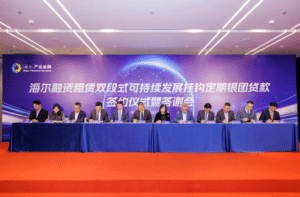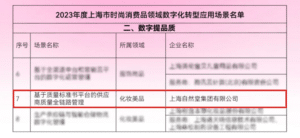ABeam (Deshuo) Intelligent Manufacturing Series (5): Digital Twin (Digital Twin) × Intelligent Manufacturing

[ad_1]
Digital twin technology, which originated in the field of aerospace and military industry, is in the development stage of industry penetration. In recent years, with the wave of digital transformation, industries such as electric power, shipbuilding, urban management, agriculture, construction, manufacturing, oil and gas, and health care have successively used digital twin technology to achieve abnormal diagnosis, decision-making assistance, and risk prediction.
In this issue, as an article in the new technology series of intelligent manufacturing, ABeam will focus on digital twin (Digital Twin) × intelligent manufacturing, and briefly analyze the application scenarios of digital twin in intelligent manufacturing.
Part 01 Digital Twin
The concept of a digital twin
The digital twin is to construct a “clone” of the entity in the physical world in the digital world through digital means, which can maintain real-time interactive connection with the physical entity in reality. With the help of historical data, real-time data, algorithm models, machine learning, etc., the understanding, analysis and reasoning of physical entities can be realized to assist decision-making.
Digital twin vs simulation
Digital twins are similar to simulations, but very different. Simulation technology ① is a simulation model technology that uses simulation hardware and simulation software to reflect system behavior or process through simulation experiments, with the help of certain numerical calculations and problem solving. It is mainly used in the research and development and design stages, usually to study a specific process, and It is not equipped with analysis and optimization functions, but the digital twin is a simulated virtual environment with features such as real-time synchronization.
Part 02 Industry panorama of digital twin

Digital Twin CPS × Industry Map
Part 03 Scenario Application of Digital Twins in Manufacturing
The combination of digital twins and manufacturing can be viewed from the life cycle of manufacturing products:
product development stage
In the field of industrial manufacturing, product R&D will go through stages such as conception, product definition, prototype design, detailed design, and verification testing. Subversive mistakes may occur in each link, but these stages also have pain points of less information and difficult decision-making. Need to try again and again, consume a lot of manpower and material resources. Using digital twins can simulate the process and process of products in the virtual world, support continuous improvement of products through prediction results, shorten the time to market of new products, and effectively identify the impact of key components on the supply chain.
manufacturing production stage
By virtualizing the production process, visualization of the production process, predictable process optimization, real-time remote monitoring, equipment fault diagnosis, etc. are carried out in the virtual digital space, which improves the management and control level of the enterprise on production and manufacturing, and improves the production quality. At the same time, the visualization of the production process also improves Increased production stability and reduced non-essential process and operational changes.
Digital twin technology also promotes data integration between upstream and downstream enterprises in the production chain, creates a highly collaborative supply chain system, optimizes resource allocation, and promotes the value-added of the entire industrial chain.
product delivery stage
In addition to links such as design and production, logistics, services and other links in the product delivery stage have also realized cost reduction and efficiency enhancement for enterprises with the deepening of digital twin technology, and improved customer user experience. Digital files of parts and raw materials can effectively manage defective products and trace their origins.
Equipment remote operation and maintenance
The real-time status perception of digital twin technology and the accumulation of monitoring data will bring a large number of database resources to enterprises. After data mining and intelligent analysis, it can provide enterprises with more accurate maintenance cycle references, shorten maintenance response time, and improve operation and maintenance management efficiency.
Part 04 The Future of Digital Twins
As a key technology for digital transformation, digital twin has attracted the attention of the industry in recent years. With the continuous injection of capital, the digital twin technology system has continued to develop, the ecology has been continuously improved, and industry applications have continued to deepen. However, there are still problems of landing difficulties for the following reasons.
Low input-output ratio
Digital twins involve processes such as product development, production, and delivery. The cost of system transformation is high, and it is difficult for small and medium-sized enterprises to introduce them. Considering the cost issue, large enterprises may only apply digital twin technology in key processes.
Technical short board
As a comprehensive integrated fusion technology, digital twin needs the support of models and data at its core. Especially in the field of manufacturing, there are large differences in technology, process and raw materials between sub-sectors, the versatility of the model is poor, the collection of multi-source heterogeneous data and cross-platform integration have become technical difficulties, and the construction of information infrastructure is unbalanced. It also restricts the integrity of the data.
In the part of reverse control to the physical world, due to different protocols and unopened devices, many scenarios cannot really break through the barriers between the physical world and the digital world.
business model constraints
Due to the large differences in model data in different industries, most of the digital twin companies currently on the market still focus on project customization and delivery, and the solutions cannot be copied in large quantities, and a good closed-loop business model has not been formed.
ABeam × Digital Twin (Digital Twin)
On the whole, digital twins have a long industrial chain and a complex technical system, which requires cross-field technology and industrial integration to form a joint force and strengthen the depth of the industry.
As a participant in intelligent manufacturing, ABeam hopes to deepen exchanges and cooperation with digital twin enterprises, conduct demand docking, build an industrial ecology with complementary advantages and win-win cooperation, and jointly serve and promote the digital transformation of global customers.
[ad_2]
Source link







